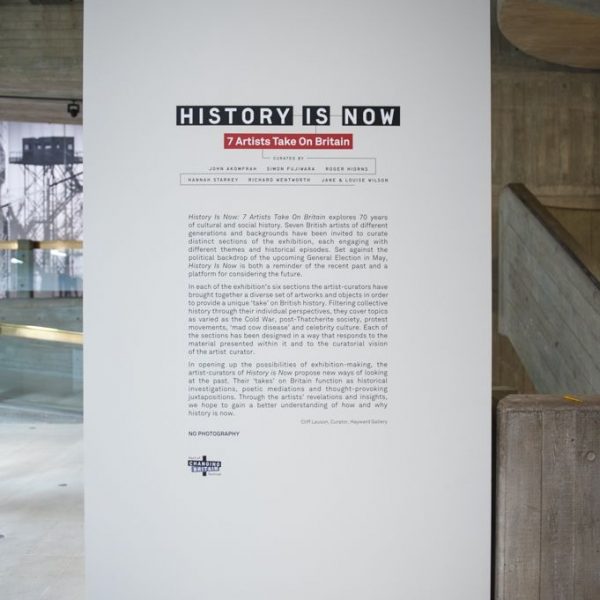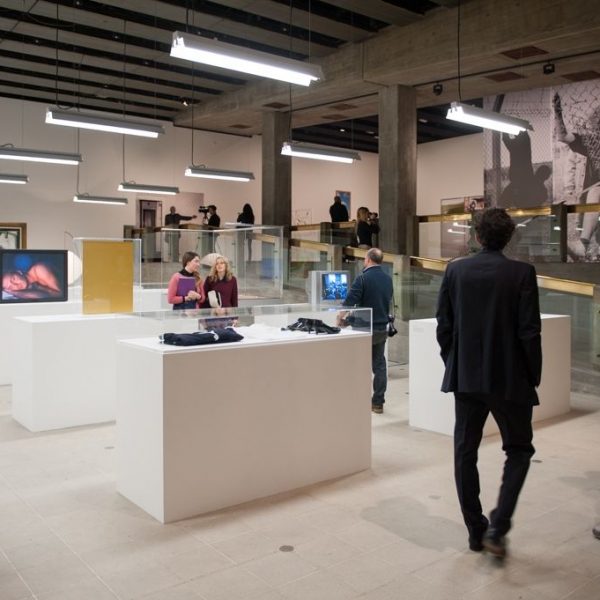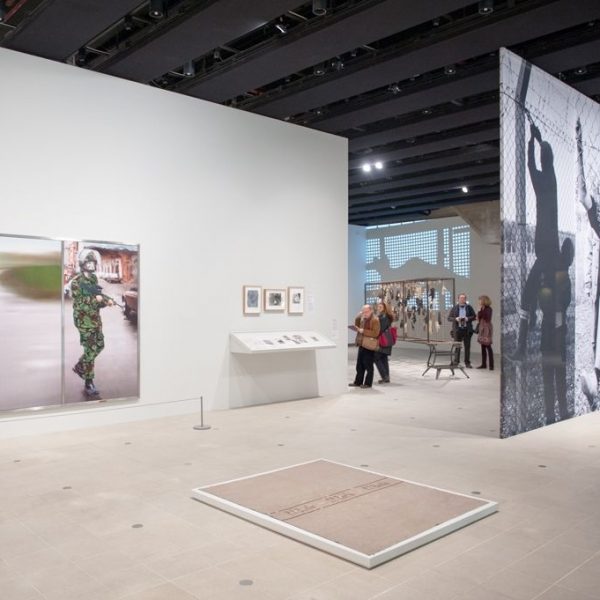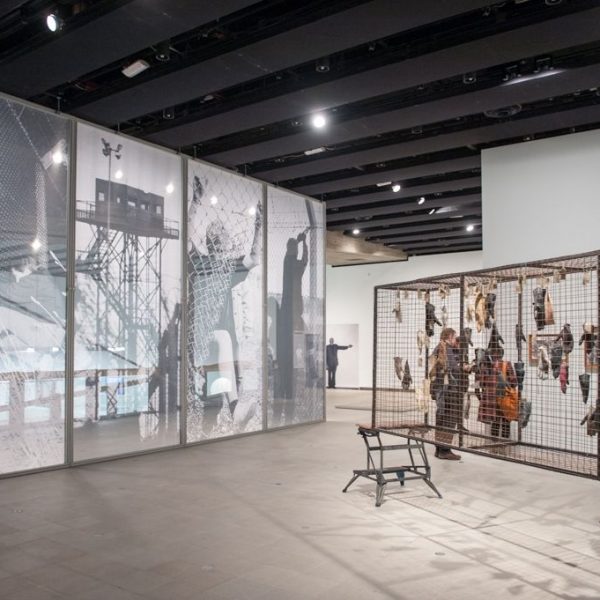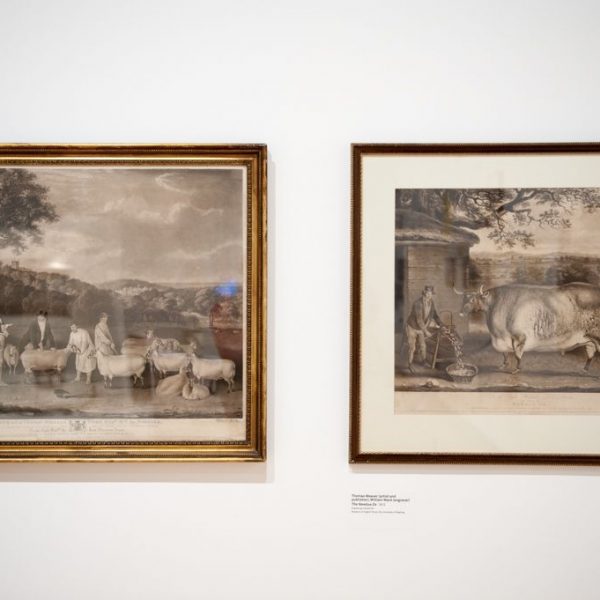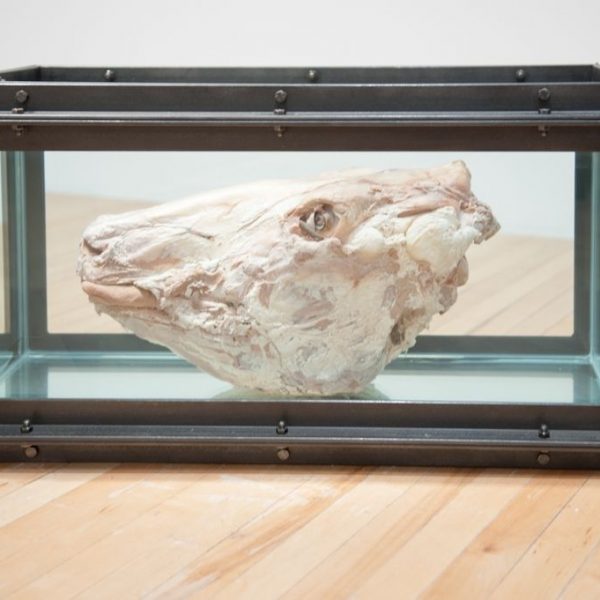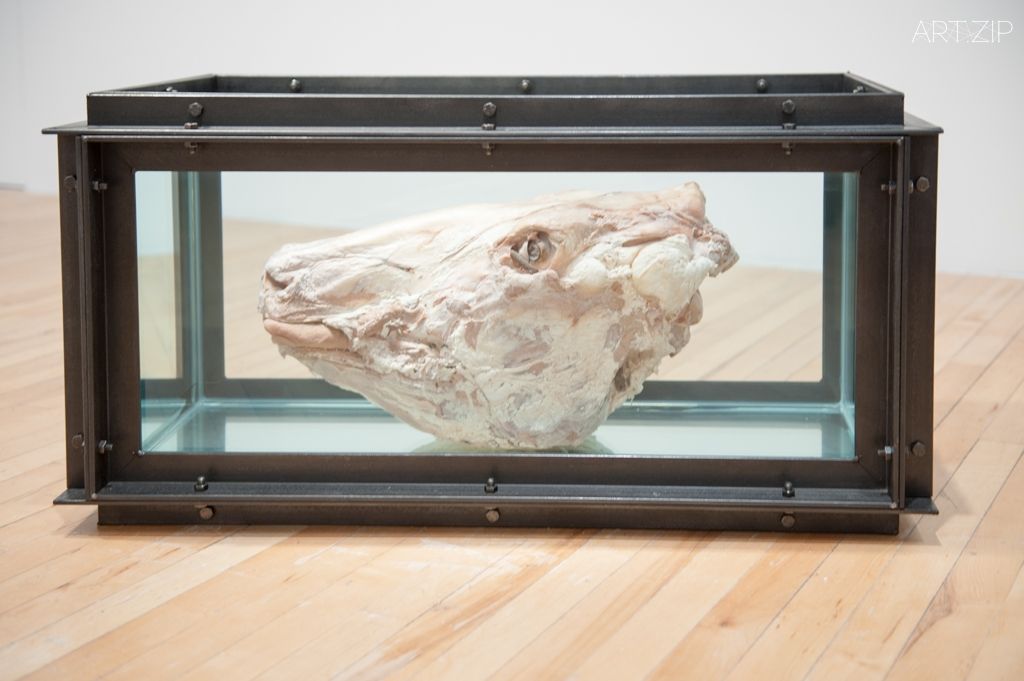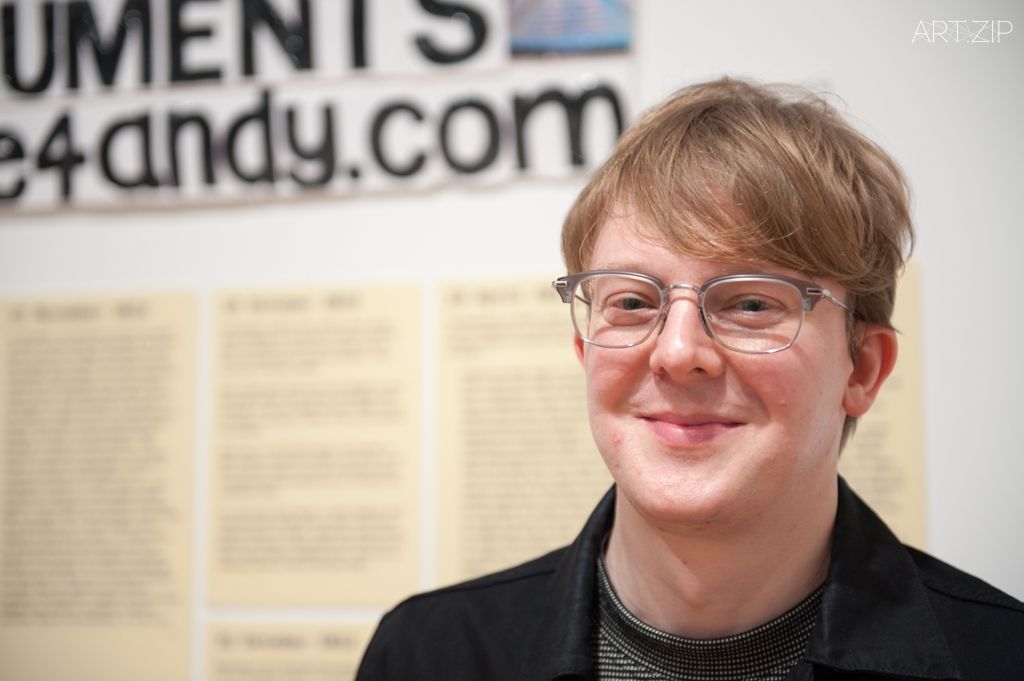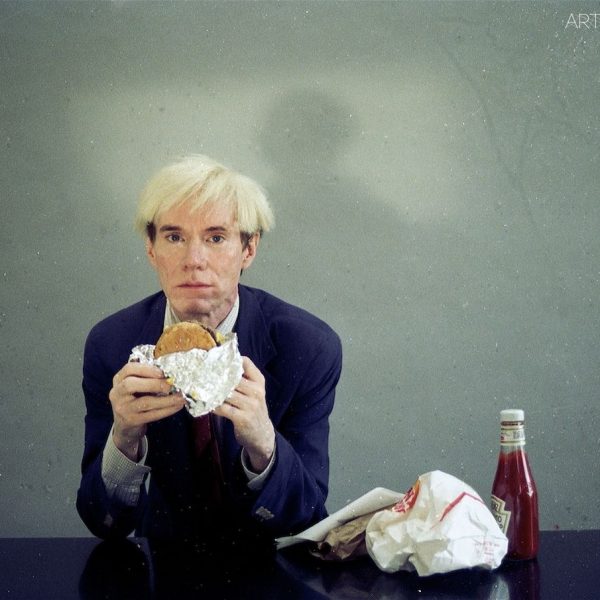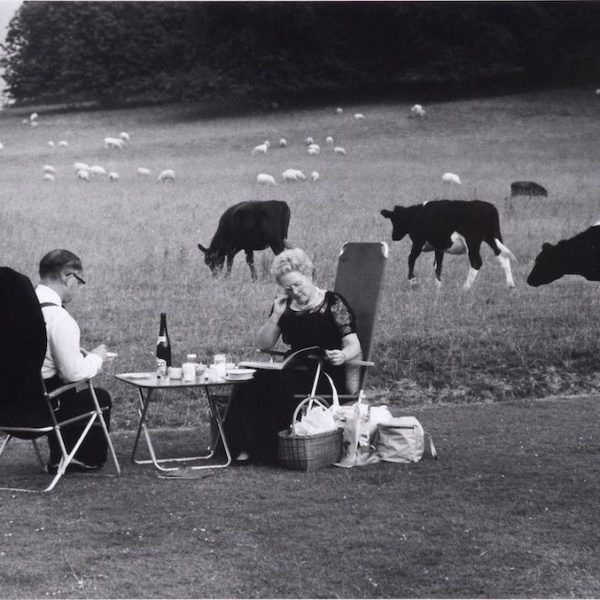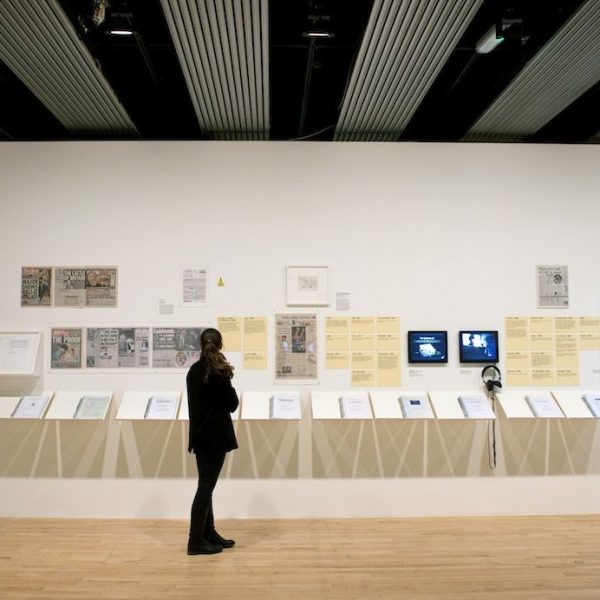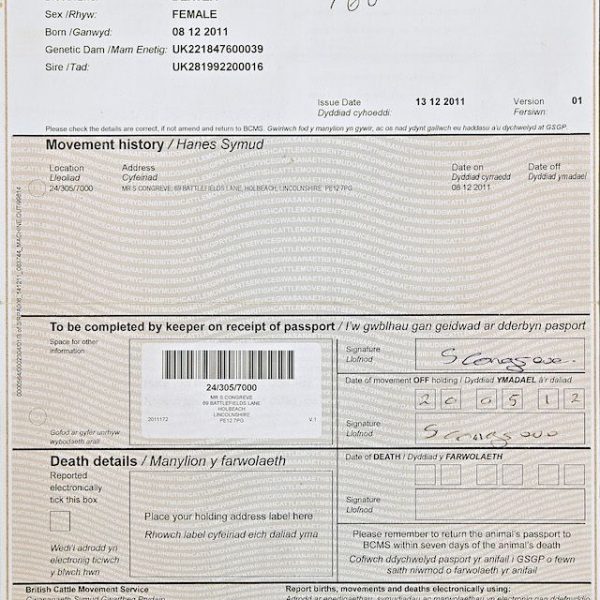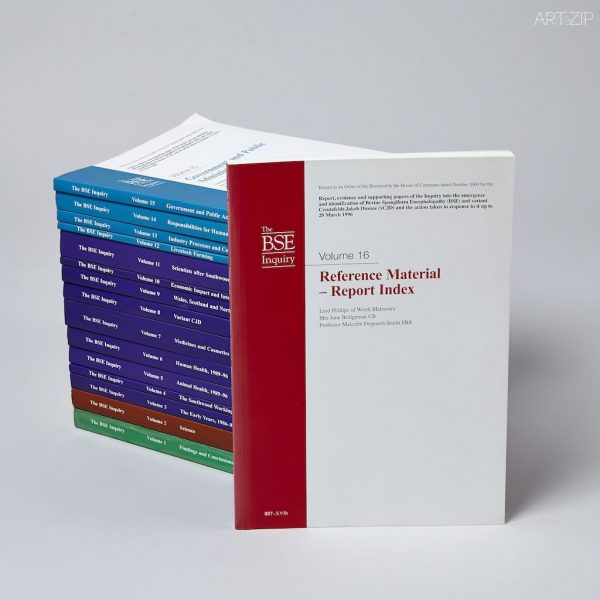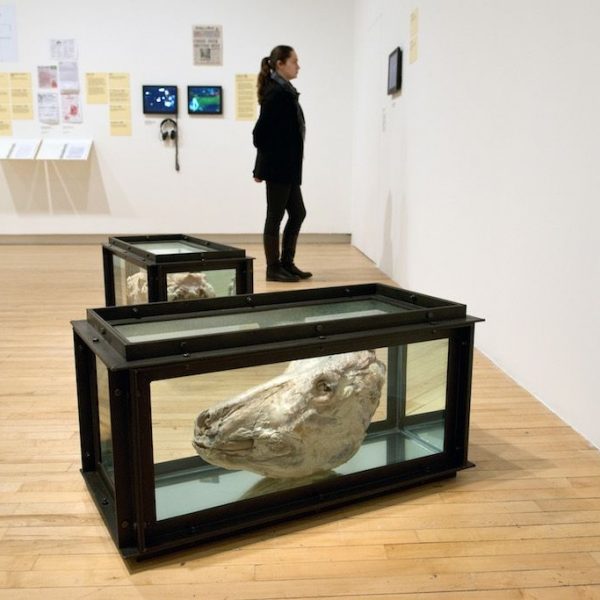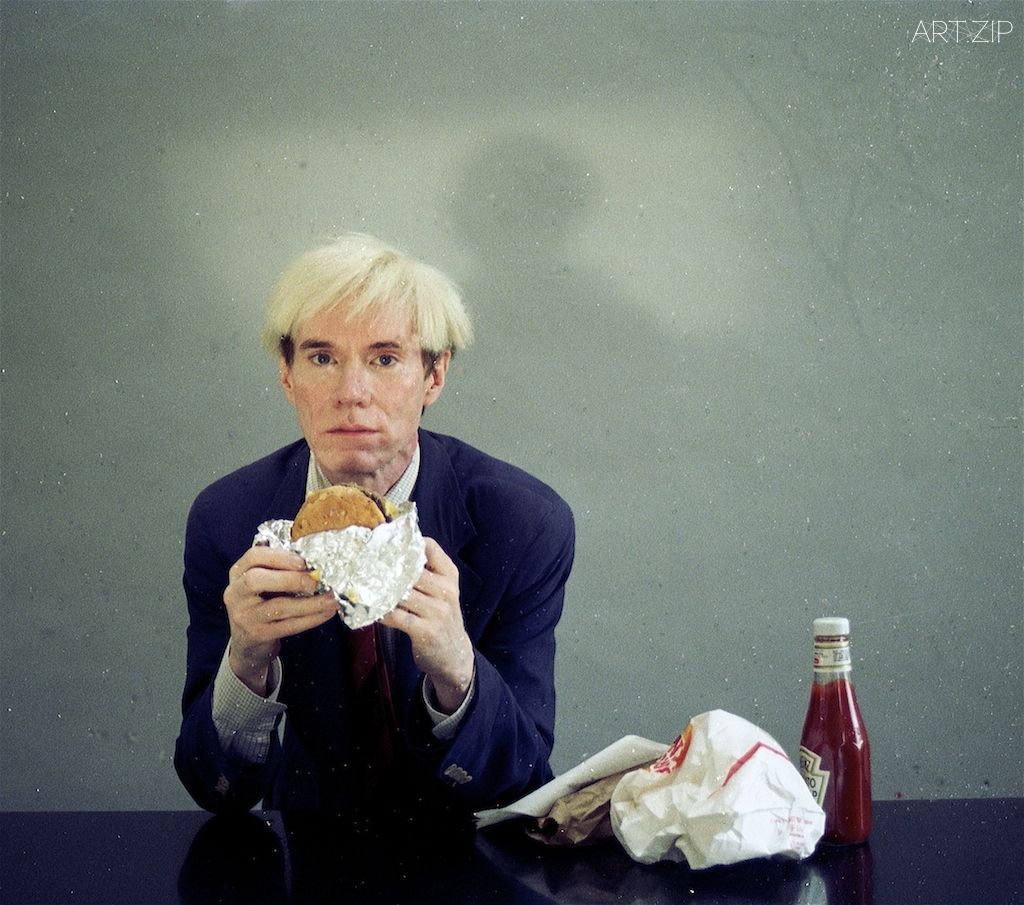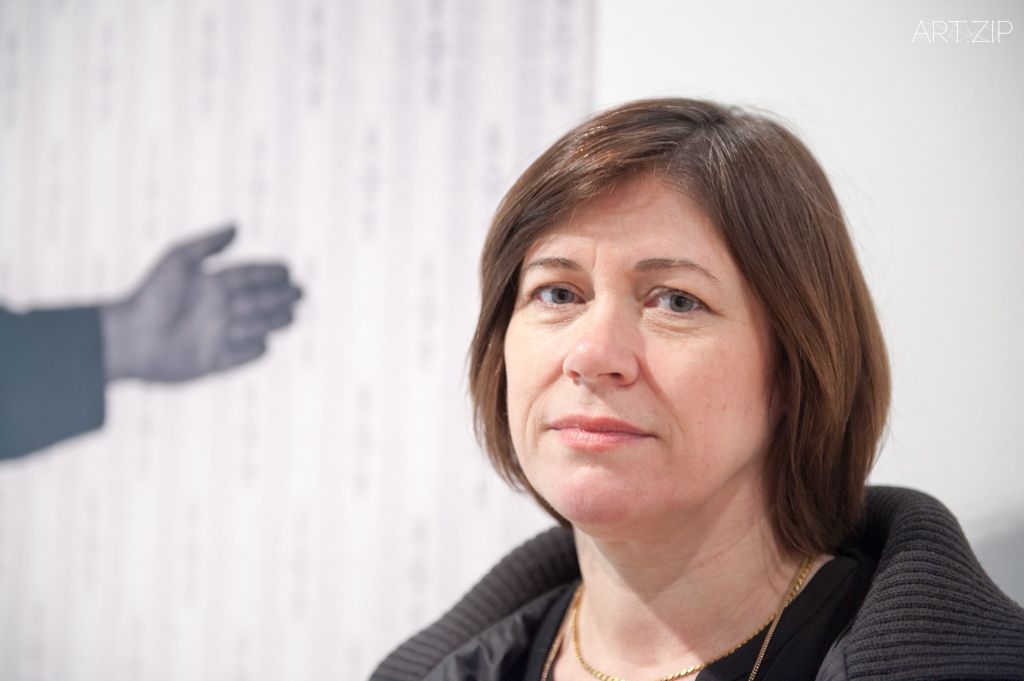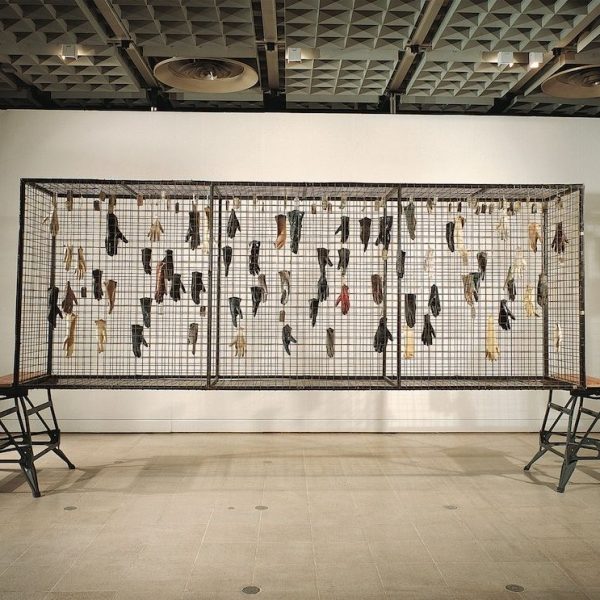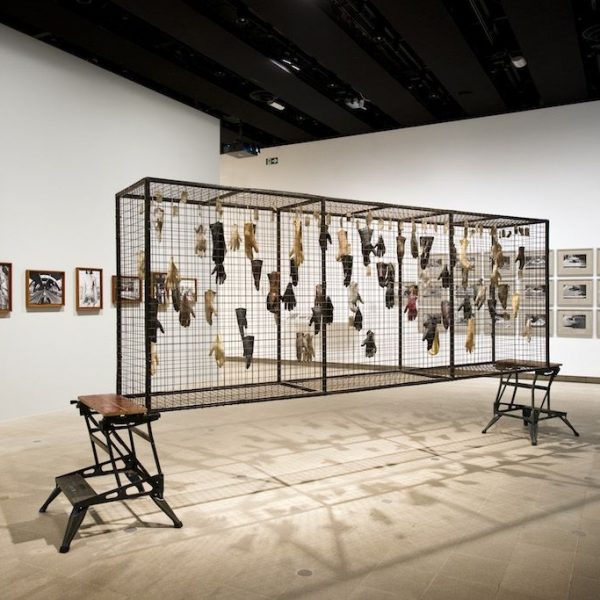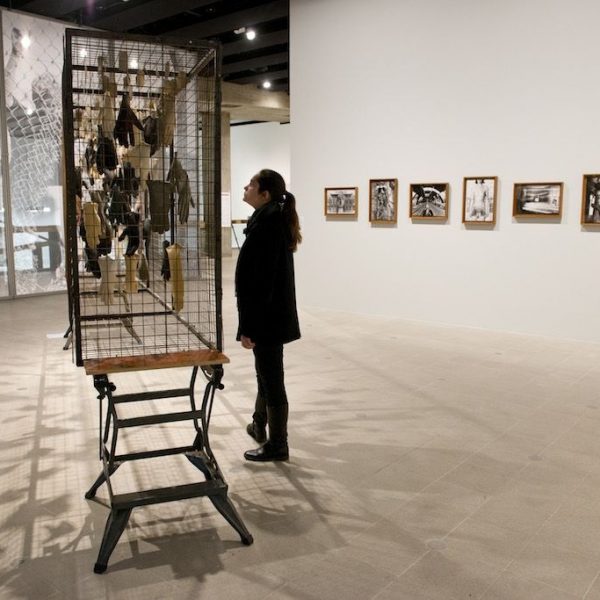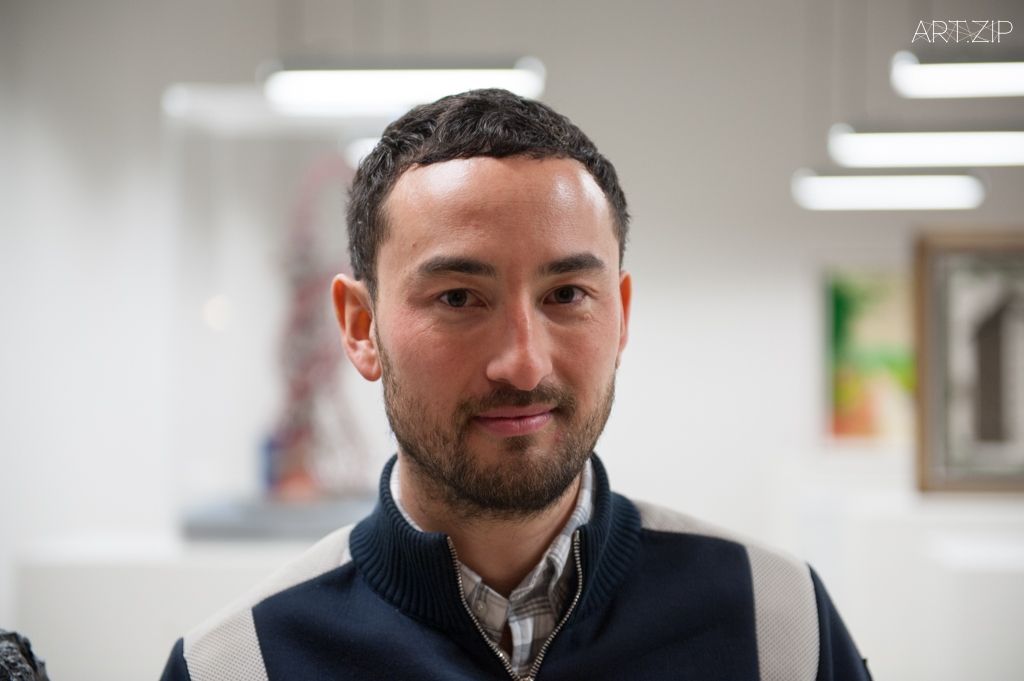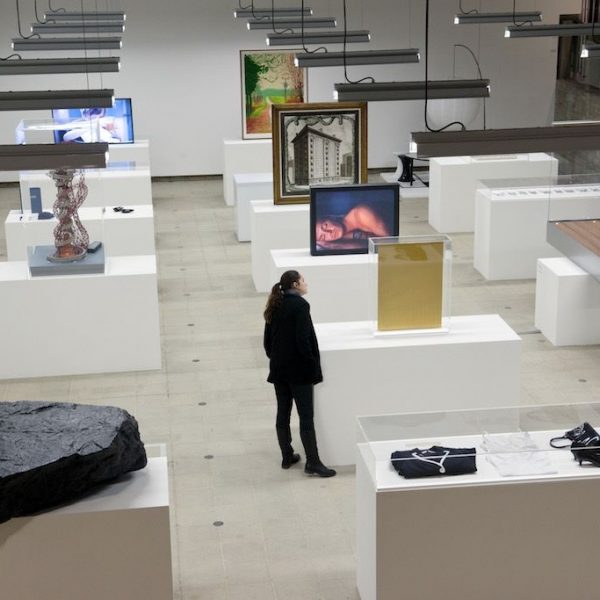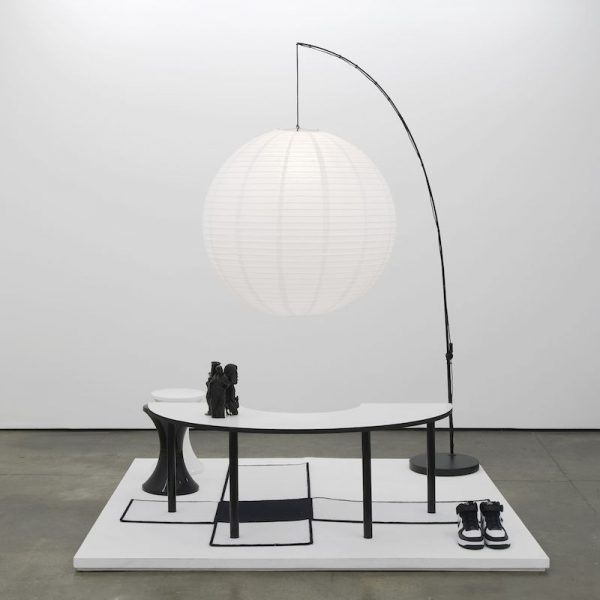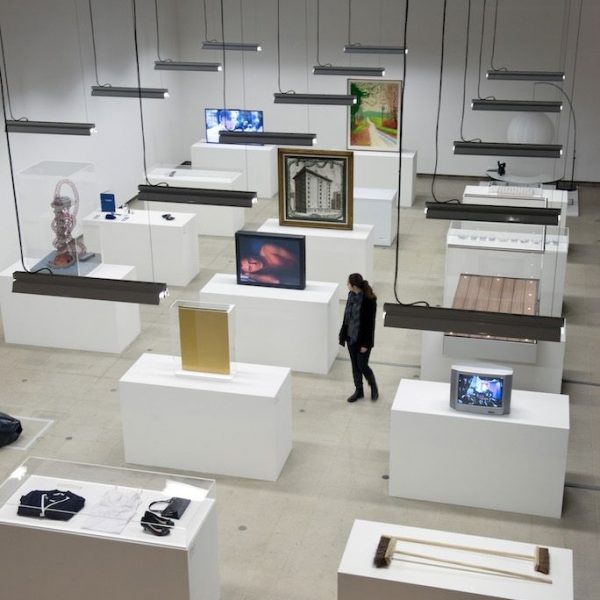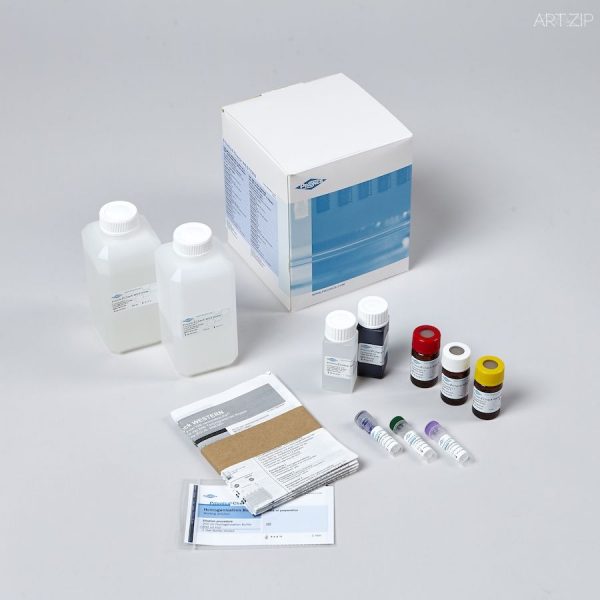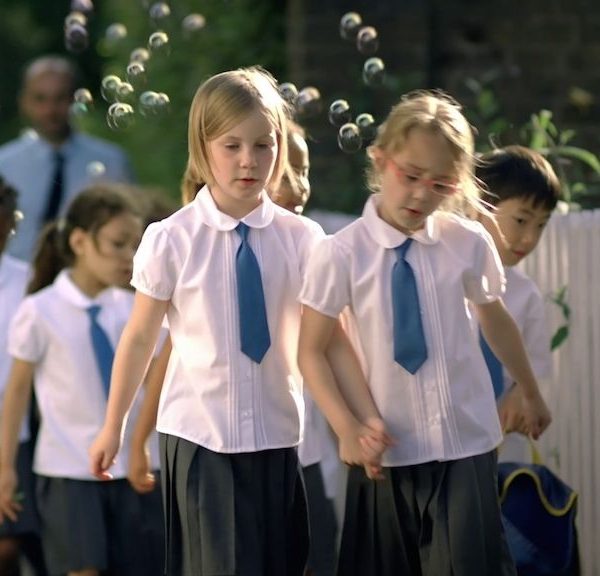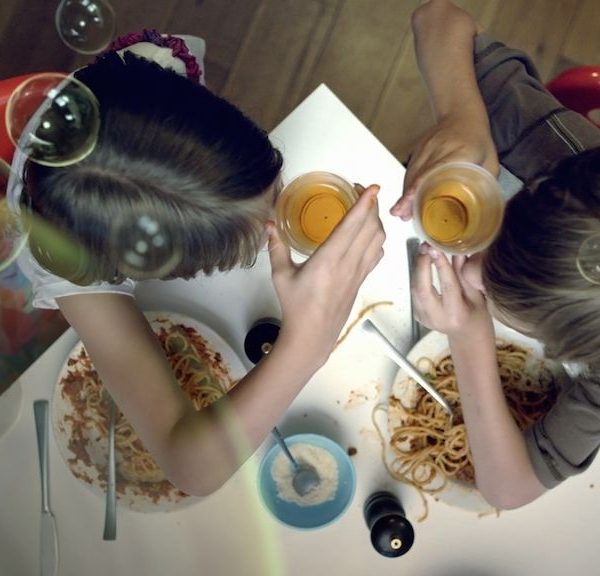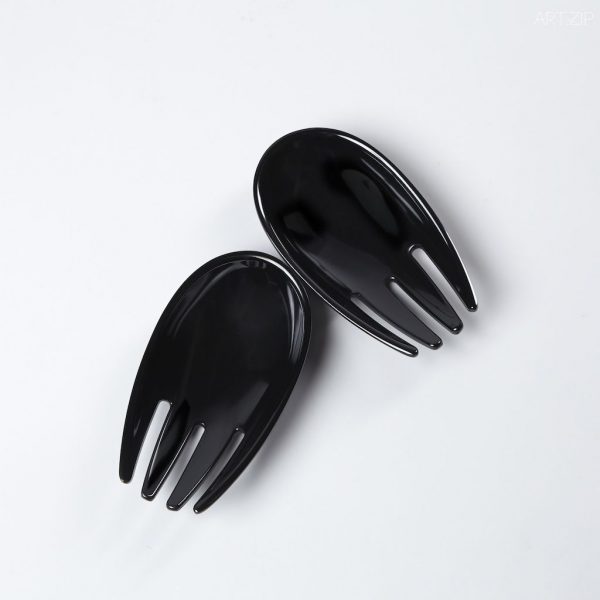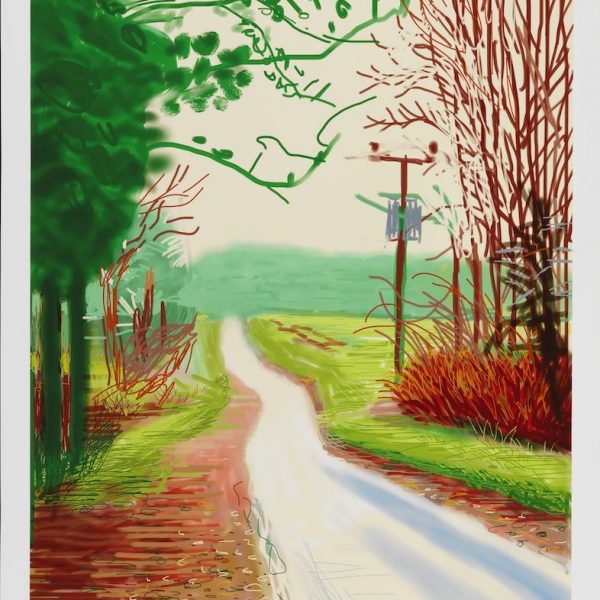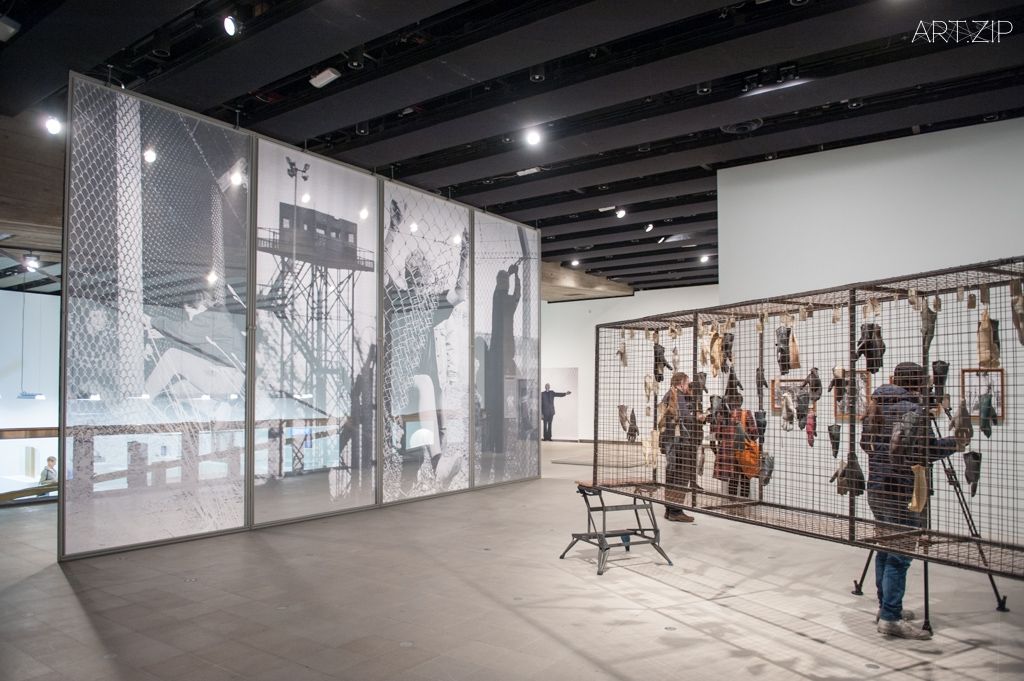
INTERVIEWED BY 採訪 x FION GUNN 菲昂·戈恩
EDITED BY 編輯 x MICHELLE YU 余小悅
TRANSLATED BY 翻譯 x QIWEN KE 柯淇雯
At the time of preparing this issue, the Hayward Gallery, London presents an exhibition HISTORY IS NOW: 7 Artists Take On Britain which is curated by 7 artists including John Akomfrah, Simon Fujiwara, Roger Hiorns, Hannah Starkey, Richard Wentworth, and Jane & Louise Wilson. Working with Dr Cliff Lauson, Hayward Gallery Curator, each artist was invited to curate a section of the exhibition, looking at particular periods of cultural history from 1945 to the present day. The exhibition aims to offer an inventive way of exploring the country’s recent history; spanning ideas and topics as varied as the Cold War, post-Thatcherite society, protest movements, feminism, ‘mad cow disease’ and celebrity culture.
Dr Cliff Lauson the Hayward curator who led the team which supported the artists felt that the artist curator perspective is both invigorating and unexpected. When comparing the methodological differences between working with institutional and artist curators, he was quick to point out that the relationship was ‘much more discursive’ and that the process was pushed to its limits.
The idea of inviting artists to curate did create an excitement around the exhibition, we’ve interviewed four artists to share with us their experience of curating. What’s more interesting, two art critics, Adrian Searle from the Guardians and Alistair Sooke from the Telegraph showed nearly opposite views responding to the artists’ curating practices.
正籌備這期專題的同時,海沃德畫廊迎來了新展《歷史再現:七位藝術家眼中的英國(HISTORY IS NOW: 7 Artists Take On Britain)》。該展覽由當下七位炙手可熱的藝術家主導,他們分別是約翰•阿康伐Akomfrah(John Akomfrah)、藤原西蒙(Simon Fujiwara)、羅傑•海恩斯(Roger Hiorns)、漢娜•史塔基(Hannah Starkey)、理查德•文特沃斯(Richard Wentworth)和威爾遜姐妹(Jane & Louise Wilson)。在與總策展人克裏夫•勞遜博士(Dr Cliff Lauson)溝通與協作後,藝術家在相對獨立的空間裡以策展人的身份搜集素材,重現某段特定的英國歷史,旨在嘗試用另一種思路來回顧英國從1945年至今的發展歷程。《歷史再現》通過開拓新方式來探索國家近代歷史,展現多樣化的思路和主題,如冷戰、後撒切爾社會抗議運動、女權主義、瘋牛病和名人文化等等。
策展人勞遜博士認為藝術家策展人的想法既充滿活力又意料之外。相較於機構策展模式,他形容這次工作關係是比較鬆散的,整個過程都有在挑戰既定的策展原則。
“展中展”這個全新模式的確是展覽的一大亮點,四位藝術家與我們分享了他們的策展經歷。更有趣的是,來自英國《衛報》和《電報》的兩位藝術評論家分別給出了截然不同的評價。
- History Is Now: 7 Artists Take On Britain at Hayward Gallery. Photo by Linda Nylind. 8/2/2015.
Roger Hiorns / 羅傑•海恩斯
Roger Hiorns’s (born 1975, Birmingham; lives and works London) work encompasses large-scale installations, individual sculptures and performances that mix everyday objects with unexpected interventions. His celebrated installation Seizure (2008), which transformed a council flat into a grotto of deep-blue crystalline growths, was nominated for the 2009 Turner Prize and acquired by the Yorkshire Sculpture Park in 2011.
Supported by a People Award from the Wellcome Trust, Hiorns investigates bovine spongiform encephalopathy (BSE) and provides an artistic exploration of the disease and its human equivalent, variant Creutzfeldt-Jakob disease (vCJD), looking at how these crises arose and key milestones in their developments, as well as their lasting impact. He has worked with scientists to investigate BSE and vCJD and to curate an exhibition that incorporates biomedicine, agriculture, animal husbandry, food production and consumption.
The exhibition itself is multi-layered, displaying artworks from the time of the crisis, such as Gustav Metzger’s Mad Cow Slide Talk (1996) and Damien Hirst’s Out of Sight. Out of Mind. (1991), and cultural artefacts – excerpts from a cattle passport, scientific equipment and objects related to BSE research, film and documentary media clips, and official committee reports – alongside newly produced objects, including a 3D-printed model of the infectious prion protein. The exhibition is structured around a timeline charting the history, development and impact of the diseases, in addition to other points that the artist found of interest.
Roger Hiorns described his curatorial journey as an emotional roller coaster as he investigated the impact of ‘mad cow disease’ (CJD) on the UK psyche back in the 80s and 90s. For Hiorns, the project represented a psychological burden as he “tried to unveil an overwhelming truthfulness”. His purpose was and is to promote understanding, to reveal what lies beneath the surface of things. He remarked that as artists “we have a different way of behaving, the world seeps in more.”
ART.ZIP:What makes you choose such scientific topic for this curatorial project in a gallery space?
RH:I think that there is a tradition that when making artworks there are certain levels or certain boundaries that are not or do not tend to be allowed to be crossed. It is a way in which we allow ourselves limitations, and I think that if contemporary art is going to survive as a legitimate way of relating to the world in a truthful way, then boundaries have to be crossed, not in an insulting, transgressive manner, but let’s be adults about things and move things forward. So I wanted to put a subject in the outer realm of things but in a gallery space. I thought it had a very hermetic social significance, there was a whole generation of people which were very affected by this disease – CJD slipped into the psychological landscape of British young people for about 10 years and that becomes culturally significant when your describing a generation, it’s a shared issue. But that issue doesn’t emerge, it remains latent.
ART.ZIP:It must have been a hugely challenging task, there’s so much text and you had to get so much information across which is analytical, it’s not just about you emoting and responding to something?
RH:I had to be impartial, reasonably dispassionate about the way the show would emerge. You can’t just be glib, you can’t start thinking about beauty and composition, you had to take a rather rationalist, essentialist position and think about displaying the work for its truthfulness, its honesty. In some ways I would describe this as a ‘hard slice of truth’ and the gallery is a place where you can actually display this and where you can present truth in an unmediated undigested way, which I think it is a new idea. I think because we’re quite happy to isolate ourselves among a number of surfaces that it is a way to break through into a level of knowledge and truth and experience things first hand. You are trying to strip away and reveal things, this is a contemporary way of revealing and to be honest.
ART.ZIP:So do you think that this describes your curatorial approach?
RH:It describes my art-making, my curatorial approach is to imagine projects, to choose shows that are not necessarily carried through to completion. I think that success and completion are maybe overrated. I think it’s more interesting to have hypothetical pairings, hypothetical ideas about how to produce a show. Shows can be expensive, they can actually involve quite a lot of work, issues of logistics and transportation. Sometimes that can be a waste of an idea. So it’s more interesting to think about how a propositions for a show might arise rather than actually finalising it, to play with the relationships between artists, matter in the world and somehow try to contaminate other people’s ideas, a cross pollination of new ideas in the world. But I guess being an artist, it’s very difficult, because I always find myself being curated in other people’s shows.
ART.ZIP:Do you yourself actually curate?
RH:I need to be aware of curation because I am curated so much, actually being on the inside of the subject can be more enlightening in a way, because you have to try to fully understand the motives of the person who’s actually curating. Those motives can be very changeable, because they want to make a name for themselves, because they want to make an investigation which is legitimate, it could be a very cool agenda that they want to position or be a very straight and serious kind of position. It’s actually interesting because I find myself in all of them and then you find yourself making value judgements about your own work. At some point, I think you have to let it go and say I’ll be part of all shows, I’ll be fascinated by how this emerges.
羅傑•海恩斯,1975年出生於英國伯明翰,現居倫敦,作品有大型裝置、個體雕塑、行為藝術,這些創作都與日常生活和偶發現場幹預相結合。著名裝置《佔領(Seizure,2008)》是把一座公屋轉變成一個深藍晶體洞穴,憑著這作品海恩賜於2009年榮獲了特納獎提名,作品於2011年起正式入駐約克郡雕塑公園。
在惠康基金會人類獎(People Award from the Wellcome Trust)的支持下,海恩斯對瘋牛病(BSE)展開了一系列調查,並對這類疾病及人類感染變異的克雅二氏病(vCJD)進行了探索,調查它的起源、發展以及後續影響。他與科學家們一同研究,打造了這場結合生物醫學、農業、畜牧業、食品生產及消費的展區。
展區按照時間順序從多個視角展示了相關的藝術作品,例如古斯塔夫•梅茨格(Gustav Metzger)的《瘋牛病幻燈片講座(Mad Cow Slide Talk)》(1996),達明•赫斯特(Damien Hirst)的《眼不見,心不煩(Out of Sight. Out of Mind.)》(1991),還有一些文獻物件,比如牛的證件、瘋牛病研究的相關設備和物件、影片、紀錄片素材和官方報告等,更有運用新科技製作的‘證物’,如3D打印的感染性朊病毒蛋白模型。海恩斯將疾病的歷史、發展以及後續影響清晰、有條理地歸整在按時間順序發展的框架下。
除此之外海恩斯還調查了上世紀80、90年代瘋牛病對英國人心理方面的影響,他深知這個真相會如潮水般湧來,所以在策展過程中他一直情緒起伏很大。但他一直秉持著信念:加深人們對該疾病的認識,揭開隱藏在背後的真相。 ART.ZIP:你為甚麼選擇在一個藝術空間討論一個如此科學的話題? RG:我認為我們在進行藝術創作時有一種無形的傳統,就是一般不會或者不輕易跨越約定俗成的標準和界限。然而這種習慣框定了我們自己,我認為如果當代藝術應該用更真實的手法去表達來證明其存在的意義,那麼這些條條框框必然要被打破,當然不是以侮辱或極端的方式,而是用成年人的做法來推動事物的進展。所以我將這個藝術領域之外的課題帶進畫廊空間。我認為該疾病一直在英國社會回蕩,一代人飽受摧殘,克雅二氏病釀成了年輕人揮之不去的心理陰影,足有十年。在這樣的文化背景下,當你描述那一代人的時候這個話題必然繞不開。直到現在這個問題的嚴重性還沒有浮現,但它仍然潛伏著。
ART.ZIP:這肯定是一個大工程,你必須拋開個人主觀情感來對大量的信息進行客觀的分析,對嗎? RG:我必須冷靜客觀地考慮這些材料的展示方式。你不能只是動動嘴皮子,也不能以美感和構圖佈局為出發點,你必須站在一個理性化、本質化的立場來考慮作品是否真實地表達了主題。在某種程度上我會說這是“實打實的真相”。畫廊變成了一個不作任何修飾地客觀展現‘真相’的空間。人們喜歡接觸第一手資料,這樣的展現方式可以讓我們有機會親身探究並深入到問題的內部。這種抽絲剝繭、揭露真相的實踐正是當代藝術的精神和作風。
ART.ZIP:所以這種當代的做法就是你的策展方式嗎?
RG:可以說我的藝術實踐的確是這樣。而我的策展原則是想像,展覽沒有必要全盤托出。人們可能對成功和完整性看得太重了,我認為懷著假想和猜測的策展才更有意思,因為結論是開放的。策劃展覽的成本其實很高,它會涉及到相當多的工作,還有物流和運輸等問題。因此過於追求完整性有時是一種浪費,浪費了一個可以分散思考的課題。因此策展更有趣的方面應該是如何提出一個假想,而不是驗證這個假想,應該更多地去考察課題與藝術家的關係,是否為觀者開啓一種新的認知。不過我覺得作為藝術家是比較難去平衡到這一點,因為我發現自己總是處在“被”展覽的角色。
ART.ZIP:那麼你有實際策展經驗嗎?
RG:我需要更明確策展的原則,因為我通常我是被策展的那一方,所以當轉換到另一方進行策展的時候其實幫助我了解策展,我需要充分了解策展人的動機。動機可能非常多變,他們或許為了署上自己的名字,也許為了進行嚴肅的考察。有趣的是我發現自己在策展時免不了對自己的作品作出價值判斷。我只能對自己說,要放開手去做,這只是展覽的一部分,無論如何呈現我都應該感到高興。
Alistair Sooke, art critic from the Telegraph
“I admire Hiorns as an artist, but this visually flat display, bludgeoning visitors with an overload of information in the form of newspaper reports, official documents in plastic folders, and scientific studies tracing the evolution of the epidemic, is off-the-wall. It isn’t a room in an exhibition so much as a temporary research centre for an obsessive historian tacking up every single primary source that he could find – and believe me, it makes for tough going.”
阿利斯泰爾•舒克,《電報》藝評人
“作為藝術家的海恩斯非常棒,但他策劃的展區——以新聞報導、官方文件、疫情演變的科學研究等形式給觀眾的信息過大,視覺效果異常乏味。它不像一個展覽,更像是一位著了魔的歷史學家在他臨時的研究室內整理每件研究對象。這個展區實在很難讓人有看下去的興趣。”
Adrian Searle, art critic from the Guardian
“With timelines, government, veterinary and medical reports, x-rays, artworks, objects and photographs, Hiorns overwhelms us with his meticulous research. It might sound dry and horrifying, but it completely sucks you in. His use of arresting incidental photographs – like the one of opera-goers at Glyndebourne picnicking beside a field of cows and sheep – take on a whole new significance here.”
艾德裏安•西勒 ,《衛報》藝評人
“海恩斯按著時間線向我們展示各種研究成果,有政府、獸醫和醫療方面的報告、X光照片、藝術作品、物品和照片等等。這也許聽起來既幹澀又駭人,但它簡直讓你無法自拔。他會選用一些吸引人眼球的圖片來澆築和主題相關的新的意義,比如有張照片描繪了常去格萊德堡歌劇院(Glyndebourne)的戲迷們,他們正在牛羊群邊野餐。”
Jane and Louise Wilson / 簡和路易絲•威爾遜
Twins Jane and Louise Wilson (Born 1967, Newcastle-Upon-Tyne; lives and works in London) began collaborating together after studying fine art at separate universities, but exhibiting identical bodies of work for their BA shows. Recent works, including A Free and Anonymous Monument (2003), Unfolding the Aryan Papers (2009) and Undead Sun (2014), take the form of multi-screen installations and explore, among other things, the legacy of modernism through specific architectural sites.
Jane and Louise Wilson explore episodes of social and political unrest that have shaped Britain during the late 20th century. The Wilsons pay particular attention to the public and private spaces in which these episodes have taken place and the ways in which artists have responded to them. Exploring how architectural space – particularly that which has been the scene of conflict – can be measured, and how memory can be recorded, they re-visit the contested legacy of Victor Pasmore’s modernist architectural contributions to the mining town of Peterlee, County Durham; draw from the archive of the Greenham Common Peace Camp; and examine the long-running conflict in Northern Ireland.
The Wilsons’ associative exhibition also features work by artists including Christine Voge and Mona Hatoum, whose work measures the impact of conflict – whether domestic or military – on individual lives. ‘By bringing together a diverse array of objects, artworks and documents’, the Wilsons explain, ‘we hope to draw attention to the energy and momentum inherent in each of them.’
ART.ZIP:How do you see the role of the artist as activist?
RH:Obviously by nature of somebody is slightly outside can throw a different perspective on how we look on things. I’m not saying that puts you into this incredibly privileged, knowledgeable mind but I do think on the whole that the fact you’ve stepped outside a bit means that you do have a bit of that space. I know that it’s a bit of a generic cliché but it is true. It is important to recognise that even at the time when you had the Greenham Common protests happening, you had people like Dieter Roth, Richard Hamilton and Jim Dine making limited edition prints to be sold to support the protest. In a way, the artist as activist is in the DNA so we felt that this was important to show alongside the archive.
ART.ZIP:Have you curated often?
RH:No, we haven’t, it was a big challenge – you don’t usually get the Hayward gallery as a space to start to curate and it demands a high level of engagement and I think that really was the main challenge. But they’ve got such a good team here…in a way they’re progressive on one level, it wasn’t like the institution oversees the priority here, what’s great about the Hayward is that it really has a collective consciousness around it.
ART.ZIP:What do you think about curating nowadays?
RH:I think the problem is that sometimes it feels like a bit of a nanny state with museums deciding what gets through, what gets seen. Sometimes when people have such a big ‘brand’ around an institution that things become a little curtailed. It can become such a myopic view about where you are as an institution that the artist becomes – you know ‘brick them in when you can’! I feel it’s good to redress the balance from time to time and keep everyone on their toes.
ART.ZIP:How do you feel being artist-curator?
RH:I think curatorial process involved translation of the priorities and thoughts of the team. Collaborating with other curators and artists always means thinking about those relationships. Being an artist curator involves being able to provoke and play around and have a more fluid position.
- History Is Now: 7 Artists Take On Britain at Hayward Gallery. Photo by Linda Nylind. 8/2/2015.
- History Is Now: 7 Artists Take On Britain at Hayward Gallery. Photo by Linda Nylind. 8/2/2015.
- History Is Now: 7 Artists Take On Britain at Hayward Gallery. Photo by Linda Nylind. 8/2/2015.
- History Is Now: 7 Artists Take On Britain at Hayward Gallery. Photo by Linda Nylind. 8/2/2015.
簡和路易斯•威爾遜姐妹,1967年出生於紐卡斯爾泰恩河畔郡,現居倫敦。在各自完成藝術深造後正式開始藝術合作。近期的作品包括《一座自由的無名紀念碑(A Free and Anonymous Monument)》(2003)、《展開印歐語文件(Unfolding the Aryan Papers)》(2009)和《日不落(Undead Sun)》(2014)採用多屏裝置的形式,她們透過研究建築來探索了現代主義的影響。
在本次展覽中,威爾遜姐妹探討了20世紀末英國的社會政治動盪。她們特別關注事件發生的公共和私人空間,還有藝術家就該事件的回應。因此她們重訪了必爭之地——維克多•帕斯莫爾(Victor Pasmore)為杜倫郡的礦業城鎮彼得利(Peterlee,Durham)打造的現代主義建築群;調出了格林漢姆康門和平營(Greenham Common Peace Camp)的檔案;調查了北愛爾蘭的長期衝突,從中探索衝突發生的建築空間留下了什麼痕跡,記憶如何被強化等等。
威爾遜姐妹的展區中展出了克裏斯汀•沃格(Christine Voge)和莫娜•哈透姆(Mona Hatoum)的作品,她們研究了衝突對個人的影響,無論是對平民還是軍人。威爾遜姐妹說道:“通過展示不同類別的物件、藝術品和文件,我們希望大家能夠發掘這裡每一件物品內在的能量和帶來的影響。”
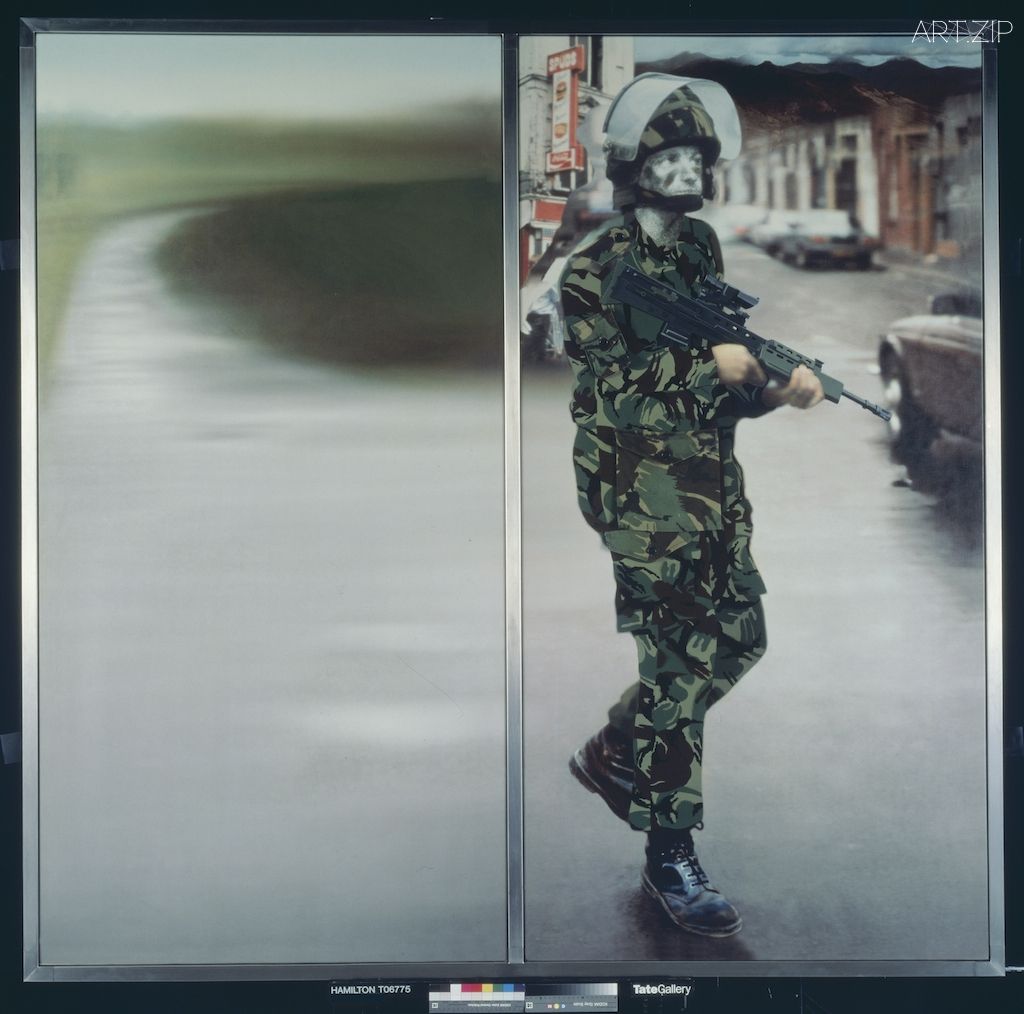
The state
1993
painting
Oil, enamel and mixed media on cibachrome on canvas
support (1): 2000 x 1000 mm
support (2): 2000 x 1000 mm
frame: 2073 x 2110 x 33 mm
ART.ZIP:你們如何看待藝術家作為行動主義者這樣的角色?
W:我覺得站在局外看事件能觀察到更多的方面。我並不是說要強加任何意見在別人身上,但放棄主觀判斷才能擁抱更全面的事實。我說的都是些陳詞濫調,但卻是事實。我們能夠看到格林漢姆康門和平營的抗議得到了不少藝術家的支持,像迪特爾•羅斯(Dieter Roth)、理查德•漢密爾頓(Richard Hamilton)和吉姆•戴恩(Jim Dine)都發行限量版版畫來支持抗議。從某種意義上來看,藝術家的行動主義基因是與生俱來的,所以把這些檔案一併呈現給觀眾有很大的意義。
ART.ZIP:你們經常策展嗎?
W:並沒有,這是一項艱巨的考驗,能在海沃德畫廊這麼好的空間策展真是太難得了,它要求策展人全身心的投入,我想這是最大的挑戰。畫廊團隊非常優秀,而且我們是平等合作,而不會因為是大機構而高高在上,他們給了我們很大的自由度,海沃德畫廊最難能可貴的就是這種集體認知。
ART.ZIP:你們對當下策展行為有什麼看法?
W:我感覺有時博物館的做法太像保姆了,決定哪些作品可以入選,哪些大眾可以看到。當一個機構聲名大噪時,策展行為反而畏首畏尾了。但目光怎能如此短淺呢,藝術家不就成了“籠中鳥”!我覺得適當作出調整是好的,每個人都應保持警覺。
ART.ZIP:身為藝術家策展人,你們有什麼感想嗎?
W:我覺得策展過程需要涉及如何平衡傳達內容的主次和團隊成員的觀點。與其他藝術家和策展人合作就要考慮彼此的關係。藝術家策展人必須俱備激勵他人、協調和變通的能力。
Alistair Sooke (Telegraph)
“(t)heir section feels infinitely more impassioned. They present art and photography recording fraught moments in recent British history, such as the Troubles in Northern Ireland and the anti-nuclear protests of Greenham Common. Britain, here, is a grim, contested, unruly place. Much of the imagery is strong and subversive: for instance, Richard Hamilton’s painting The State (1993), a picture of an uneasy, grey-faced squaddie on patrol in Northern Ireland in which the only part completely in focus is his rifle. Stuart Brisley’s 1983 installation 1=66,666 is similarly powerful: inside a menacing, rusty cage, 66 leather gloves swollen with plaster hang upside down like trussed game following a shoot, each one representing 66,666 people that out of work. It looks gruesome.”
阿利斯泰爾•舒克,《電報》藝評人
“威爾遜姐妹的展區令我無比振奮。當中展出的藝術作品和攝影作品追溯了英國近代史中的不堪時刻,比如北愛爾蘭的動亂以及格林漢姆康門的反核抗議活動。展區中的英國正遭遇著無組織無紀律的嚴峻考驗,大部分的圖像都極具震懾力,例如理查德•漢密爾頓的畫《國家(The State)》(1993),描繪了一位正在北愛爾蘭巡邏的灰臉新兵,手上的步槍是整幅畫面的焦點。斯圖爾特•布裏斯利(Stuart Brisley)裝置作品《1=66666》(1983)也具備同樣的威力:一個生鏽的籠子裡倒掛著灌滿石膏的66副皮手套,像是射擊的捆綁遊戲,每一副代表了失業的66666人,真是令人毛骨悚然。”
Adrian Searle (Guardian)
“The Wilsons excavate the out-of-time solidarity of the Greenham Common protest and set it against the militarisation of public space first excused by IRA terrorism. The raw emotions of Greenham protesters’ diaries become emblematic of passions now seemingly as distant as those of Mrs Banks’s suffragettes. They are brought beautifully to life by juxtaposition with Penny Slinger’s magical, semi-abstract film sequences, projecting her body as the battleground of art, and stiffly counterpointed by extendable yardsticks that once measured the precise span of hydrogen bomb chambers at Orford Ness; even the imperial measure is now obsolete.”
艾德裏安•西勒,《衛報》藝評人
“威爾遜姐妹把不合時宜的格林漢姆康門抗議活動再次帶到觀眾視線,正對著的是愛爾蘭共和軍(IRA)恐怖統治下最早的軍事化公共空間。抗議者日記中自帶的原始情感成為了憤世的象徵,現在看來和班克斯夫人的那些婦女參政論同樣遙遠。旁邊還放著潘妮•斯林格(Penny Slinger)神奇的半抽象電影,她用身體作為藝術的戰場,而參照物威爾遜姐妹選用了生硬的碼尺,即使它曾精確測量過位於奧福德內斯的氫彈室,即使曾經輝煌一時現在恐怕早已無人問津了。”
Simon Fujiwara / 藤原西蒙
Simon Fujiwara’s (born 1982, London; lives and works in Berlin) installations, performances, texts and video works often combine the artist’s personal history with the biographies of other people, places and objects, to create works in which reality and fiction are indistinguishable. In 2010 Fujiwara was given a ‘retrospective’ at Tate St Ives, which was simultaneously the artist’s first major UK exhibition.
Bringing together objects and artworks from current visual and material culture Simon Fujiwara presents an archaeological assessment of life in contemporary Britain. Works by Young British Artists such as Damien Hirst and Sam Taylor-Wood, who rose to fame in the 1990s and continue to generate headlines today, touch on Britain’s increasing preoccupation with celebrity and entertainment.
Elsewhere in his exhibition Fujiwara presents items – from brooms to a prefabricated balcony – that raise questions about the changing relationship between public institutions and private companies, or the ways in which events in recent British history – such as the 2011 riots that swept the country’s largest cities – have been narrated and reinterpreted through their media coverage. At the same time this diverse array of objects and artworks allows Fujiwara to trace the recent shift from material to immaterial production that has taken place in Britain, and the ways in which optimism has shaped our current economic, political and cultural climate. Happiness is now a Gross Domestic Product – a fact that Fujiwara reads as ‘a powerful symbol of our late-capitalist moment.’
ART.ZIP:How did you come to curate?
SF:I think I was invited because a lot of my projects involve other artists’ works, I’d had a retrospective in my home town St Ives and had worked a lot with St Ives artists. I was invited on the grounds that it would be a highly personalised individualised narrative about something specific, and my section ended up being about all of us and the material in the world we live in globally and how it manifests itself in England specifically.
ART.ZIP:Looking at your labels, there’s less text in you section than any of the others?
SF:Yes and that’s exactly what I wanted to do – I want you to ‘know’ but not know. Everything looks like a brand but of course there’s more to it than that. Because everything is a brand, even our feelings, if you’ve ever taken any medicine which I’m sure everyone here has, you’ve understood that now in ourselves, we are a brand…So that was the idea in this whole section, you think you know what you’re seeing but you never really know…
藤原西蒙,1982年出生於倫敦,現居柏林。他將個人經歷與他人的經歷、地點和物品結合到裝置、行為、文本和影像作品中,刻意模糊了現實與虛構的界限。 2010年,泰特聖艾夫斯畫廊(Tate St Ives)為他舉辦了回顧展,同時這也是他在英國首次重要的展覽。
通過當下視覺物質文化的作品和物件,藤原對英國當代生活進行了考古式的探索。青年英國藝術家(YBA)達明•赫斯特(Damien Hirst)和薩姆•泰勒-伍德(Sam Taylor-Wood)的展品也在展區內進行展示,從90年代起名聲一直有增無減,這些都深刻地反映了英國日益沉迷的名人文化和娛樂話題。
另外從掃帚到組合式陽臺,藤原藉由這些物件提出了一系列質疑——公共機構和私營公司之間的變化關係;近年來英國大事件的發生,如2011年的暴亂席捲了幾個重要城市,這之前媒體已經報道或重新闡述過這些事件。他還調查了近年來英國從物質到非物質生產的轉型過程,樂觀主義造成了當前經濟、政治和文化環境。如今“幸福”作為衡量當今國內生產總值的一個指標,藤原視其為後資本主義社會的一個有力符號。
ART.ZIP:你是如何成為本次展覽策展人的?
SF:我有很多項目會接觸到其他藝術家的作品,我在家鄉聖艾夫斯曾舉辦過回顧展,也和不少當地藝術家合作過。我被邀請主要是基於一個高度個性化、個人化的敘事方式,我的展區是關於在全球化環境下生活的我們和物質在英國的語境下又有什麼特殊指代。
ART.ZIP:你展區中的作品標籤似乎比其他展區的文字信息要少得多?
SF:是的,這正是我的表達——我讓觀眾“知道”,但又不能全盤托出。一切看起來就像一個個商標,但背後的意義當然遠遠不止這些。因為任何東西都可以變為商標,甚至是感覺,相信每個人都服用過藥物吧,其實藥也是一個商標。所以這就是我討論的核心,眼見非實,或者說我們永遠不可能知道事實的全部。
Alistair Sooke (Telegraph)
Fujiwara seems to be laughing up his sleeve at what he perceives to be a middle-class lifestyle in thrall to consumerism, capital, and celebrity chefs. Fine, but does this add up to anything more than a spot of light satire? And will anyone care? The whole thing feels so cold and uptight, so calculated and awash with irony – and ultimately so forgettable. What a bland and bloodless way to open an exhibition designed to take the pulse of the nation.
阿利斯泰爾•舒克,《電報》藝評人
“藤原西蒙似乎在拂袖嘲笑那些中產階級只知道消費、資本和明星主廚。好吧,但除了略微的諷刺之外還剩下什麼呢?會有人在意嗎?整個展區既冷清又拘謹,這麼蓄意的諷刺最終還是讓人過目即忘。這是一種多麼蒼白無力的方式來講述國家的動向。”
Adrian Searle (Guardian)
Fujiwara’s ensemble is all about buying things, having things and wanting more, whether it’s a Damien Hirst spot painting (lain on its back, as it would have been when some poor studio assistant had to paint in its perfect dots) or Nigella Lawson’s handy salad scoops. The deft juxtapositions and exhibition layout are pure genius.
艾德裏安•西勒,《衛報》藝評人
“藤原西蒙的展覽圍繞了購買、擁有以及無止境的欲望,無論是達明•赫斯特圓點繪畫(作品讓人聯想到是一群可憐的工作室助理們正默默的繪制著這些圓點)還是奈潔拉•勞森(Nigella Lawson)便捷的沙拉勺。巧妙的搭配和展區佈局真是太絕了。”

